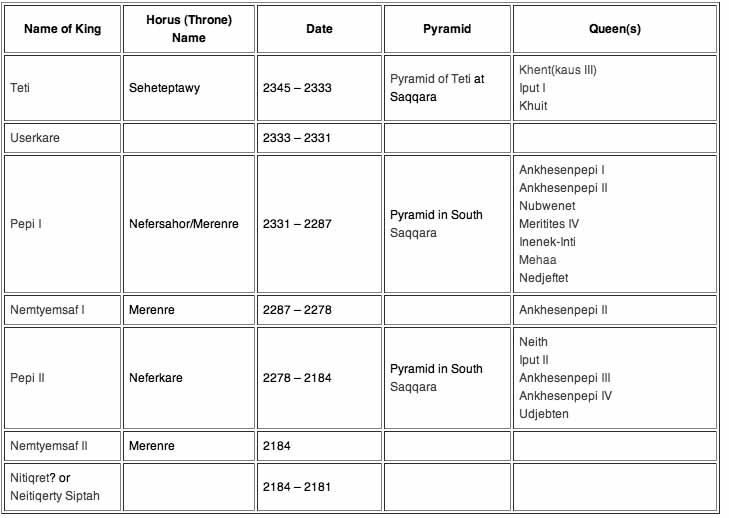
The Sixth Dynasty of ancient Egypt (notated Dynasty VI) is often combined with Dynasties III, IV and V under the group title the Old Kingdom.
Dynasty VI is considered by many authorities as the last dynasty of the Old Kingdom, although The Oxford History of Ancient Egypt includes Dynasties VII and VIII as part of the Old Kingdom. Manetho writes that these kings ruled from Memphis, since their pyramids were built at Saqqara, very close one to another.
All kings of the 6th dynasty, except for Merenre II and Nitocris, are attested by archaeological sources. Merenre II and Nitocris are only known through the king-lists and Manetho. No known monuments give there names and they are not even mentioned in inscriptions of high officials. Because the king-lists often give Merenre II the same titulary as Merenre I, it is believed that at least his titulary may be the result of a mistake.
The Turin King-list makes a summation of regnal years for the first five dynasties, before listing the kings of the 6th through 8th dynasties. This may suggest that with the 6th Dynasty, a new royal house came to power. The relationship between the founder of the 6th Dynasty and his predecessor is debated. It is believed by some that he was married to his predecessor's daughter.
From a cultural point of view, the 6th Dynasty is the continuation of the end of the 5th Dynasty. The kings continued to commission pyramids for their mortuary cult. The pyramids and mortuary temples of this period are of a standard size and basically have the same layout. The burial chamber, antechamber and entrance corridor of these pyramids are inscribed with Pyramid Texts, following the example set by Unas of the 5th Dynasty. Most kings of the 6th Dynasty also chose to build their funerary monument in Saqqara and here too they were following the example of the last two kings of the 5th Dynasty.
Governmental reforms were intended to strengthen the residence's hold on the rest of the country. It is often claimed that the policy of instating local governors in the provinces eventually caused the downfall of this dynasty and of the Old Kingdom.
It can indeed be noted that during the 1st Intermediate Period, the power of these local rulers appears to have increased, to the detriment of the central government.
The long reign of Pepi II is also often considered the cause of the end of the Old Kingdom.
In this view, the elderly king's court was the stage of intrigue and plot, with different members of the royal family and some high ranking officials conspiring to get a grasp on the government.
It must, however, be noted that there is no evidence to support this "romantic" fantasy. Even if the ageing Pepi II were unable to rule the country by himself, the central administration was organised well enough to govern in his place.
It is believed more and more that changes in climate and a lower inundation of the Nile are likely to have played an important part in the downfall of the dynasty.
Known pharaohs of the Sixth Dynasty are as follows (the absolute dates given are suggestions rather than facts, as the error margin amounts to tens of years). The pharaohs of this dynasty ruled for approximately 164 years. The Horus names and names of the Queens are taken from Dodson and Hilton.

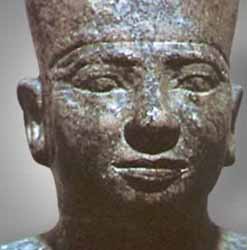
Teti was the first king of the 6th dynasty.
He Who Pacifies The Two Lands" - (2323-2291 BC)
Teti, less commonly known as Othoes, was the first Pharaoh of the Sixth dynasty of Egypt and is buried at Saqqara. The exact length of his reign has been destroyed on the Turin King List, but is believed to have been about 12 years.
Egypt's 6th Dynasty marks the decent into the darkness of the First Intermediate Period in Egypt's history. At times, the rule of these kings is somewhat obscure, including that of Teti (sometimes also known as Othoes, from Mantheo King Lists), who was the first king and the founder of the 6th Dynasty His reign settled some of the accession problems following the death of Unas. In fact, he adapted the Horus name, Seheteptawy, which means, "He who pacifies the Two Lands".
He ruled Ancient Egypt from around 2345 until 2333 BC, though of course Egyptologists differ on these dates, as well as his length of rule. The Turin King's List gives him less then one year's rule, which most scholars find very unlikely. Manetho suggests thirty, to thirty-three years, but there is no evidence of his jubilee festival, so this also seems unlikely. The latest known date from Teti's reign is that of the "sixth census", an event that took place on average every two years, or possibly every year and a half. Therefore many Egyptologists give him a reign of twelve years.
His wife, Queen Iput I, was probably the daughter of King Unas who was the last king of the 5th Dynasty. The queen was the mother of Teti's heir, King Pepi I. Historians believe that she is the one that gave him the royal power, legitimizing his rule. She is buried in her own pyramid near Teti's at Saqqara. Other wives included Khuit and Weret-Imtes. Along with his son, Pepi I, he also probably had another son named Teti-ankh-km, which means "Teti-ankh the Black", and a daughter named Seshseshet (also called Watet-khet-her). Her marriage to the vizier Mereruka probably furthered Teti's political stability, creating good will within the increasingly powerful nobility.
Almost all the major court officials of King Unas remained in power during Teti's reign, including his other vizier, Kagemni. As stated, we know little about Teti's reign, though there is evidence that quarry work was performed on his behalf at Hatnub near Abydos, and that he maintained commercial and diplomatic relations with Byblos. He also may have maintained relations with Punt and Nubia, at least as for south as the site of Tomas in northern Nubia.
We have evidence of his exempting the temple at Abydos from taxes, and he was the first ruler to be particularly associated with the cult of Hathor at Dendera.
Teti granted more lands to Abydos and his name was inscribed in Hatnub. He built a pyramid in Saqqara which is called by modern Egyptians the "Prison Pyramid". Egyptologists discovered a statue of him made of black and pink granite. The statue is located at the Egyptian museum.
The king was murdered by his guards for mysterious reasons, according to the Manetho. However, there is no other evidence of this violent death, though it might help to explain the possible short rule of a King Userkare, possibly between that of of Teti and his son, Pepi I. It is interesting to note that this king, arbitrarily left out of most modern lists of kings, is better attested to then most histories of Egypt allow.
Many references today point out that the only references we have for Userkare are from the Turin and Abydos king's lists, but this is not so. Other documents bearing his name have survived, including one referring to workers at Qau el-Kebir south of Asyut who were possibly engaged in building his tomb. Userkare means the "Ka of Ra is powerful", and therefore has a strong resonance of the 5th Dynasty. Therefore, Userkare may have been a surviving rival of Teti from the 5th Dynasty. However, he may have also simply been a regent associated with Queen Iput after Teti's death, as Pepi I may have been too young to ascend the throne at that time.
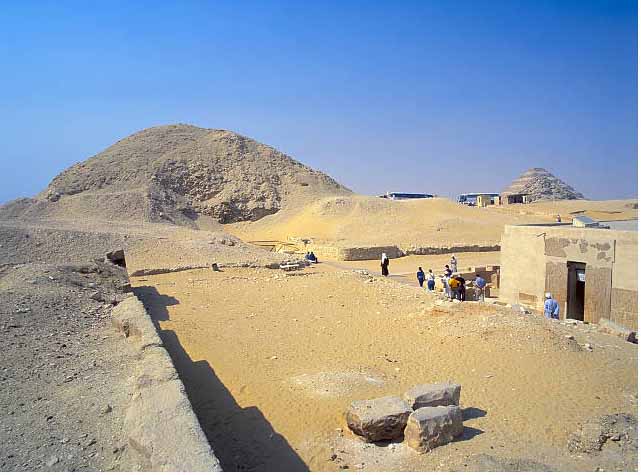
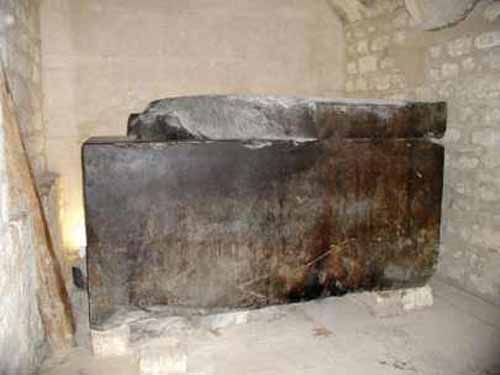
Sarcophagus
Pyramid texts from Teti I's pyramid at Saqqara - Once 5 stories tall, it lay beneath 23 feet (7 meters) of sand, a small shrine and mud-brick walls from later periods. The 3rd known "subsidiary" pyramid to Teti's tomb, was originally 46 feet (14 meters) tall and 72 feet (22 meters) square at its base, due to its walls having stood at a 51-degree angle. Buried next to the Saqqara Step Pyramid, its base lies 65 feet underground and is believed to have been 50 feet tall when it was built.
Userkare ("The Soul of Ra is Strong") was the second king of the Sixth Dynasty. He is generally seen as one of the leaders who opposed his predecessor, Teti's royal line and was most likely an usurper to the throne. Alternatively Janosi and Callender thought Userkare could be the son of Teti and Queen Khuit.
Userkare may have been a royal claimant from the Fifth dynasty but he was certainly a rival to Teti for the throne. Since Manetho claims that Teti was killed by his bodyguards, theories of conspiracy have been put forward that Userkare was the leader of this conspiracy who then proceeded to seize the throne. The recently discovered South Saqqara Stone document from Pepi II's reign confirms his existence and assigns him a reign of between two to four years. Teti's son, Pepi I, eventually managed to oust Userkare and succeed his murdered father.
In the Turin King List, there is a lacuna between Teti and Pepi I Meryre, large enough to have fit an entry for Userkare. Userkare is apparently mentioned in several king-lists.
Userkare started work on some larger building projects, as shown by an inscription mentioning his workforce. However, no pyramid-complex has been identified for him presumably because of the brevity of his reign.
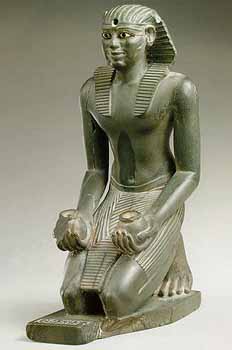
Pepi I was the third king of the 6th Dynasty.
Pepi I Meryre (reigned 2332 - 2283 BC) was the third king of the Sixth dynasty of Egypt. His first throne name was Neferdjahor which the king later altered to Meryre meaning "beloved of Re."
Pepi was the son of Teti and Iput, who was a daughter of Unas, last pharaoh of the previous dynasty. He needed the support of powerful individuals in Upper Egypt in order to put down his brother, the usurper Userkare who had murdered his father and for Pepi to win back his rightful throne. These individuals would remain a strong presence in his court thereafter.
His two most important wives and the mothers of his two successors (Merenre Nemtyemsaf I and Pepi II) were Ankhesenpepi I and Ankhesenpepi II. Other known wives include Meritites IV, Nubwenet and Inenek-Inti, who are buried in pyramids adjacent to that of Pepi, Mehaa, who is named in the tomb of her son Hornetjerkhet, and a queen named Nedjeftet who is mentioned on relief fragments. He also had a son called Teti-ankh and two daughters, Iput II and Neith, both became wives to Pepi II.
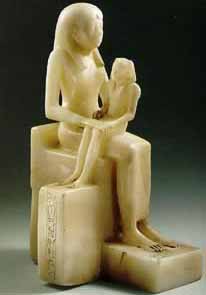
He also had a daughter by Ankhnesmerire I called Neith, who would later marry her half brother Pepi II. It appears that Pepi II was born either just before or soon after Pepi I's death. Pepi I may have had a number of other wives, including a Nebuunet (Nebwenet) and Inenek-Inti, who's small pyramids are near his at South Saqqara. An inscription has also been found documenting another queen, perhaps from Upper Egypt, named Nedjeftet. Other family members, though we are not so sure of their relationships, probably included a woman named Meretites, and another woman named Ankhesenpepi (or Ankhnesmerire) III.
Pepi I's reign was marked by aggressive expansion into Nubia, the spread of trade to far-flung areas such as Lebanon and the Somalian coast, but also the growing power of the nobility. One of the king's officials named Weni fought in Asia on his behalf. Pepi's mortuary complex, Mennefer Pepy, eventually became the name for the entire city of Memphis after the 18th Dynasty.
The decline of the Old Kingdom arguably began during Pepi I's reign, with nomarchs (regional representatives of the king) becoming more powerful and exerting greater influence. Pepi I married two sisters - Ankhesenpepi I and II - who were the daughters of Khui, a noble from Abydos and Lady Nebet, made vizier of Upper Egypt. Pepi later made their brother, Djau, a vizier as well. The two sisters' influence was extensive, with both sisters bearing sons who were later to become pharaohs.
An analysis of the damaged Dynasty 6 South Saqqara Stone Annal document gives him a reign of c. 48-49 years but this is not confirmed by the Turin King List which apparently assigns him 44 years, according to the Danish Egyptologist Kim Ryholt's analysis of this document.
The latter figure may be closer to the truth since it would imply that Pepi I's cattle count dating system was not always biennial. That this is the case is suggested by a famous Year after the 18th Count, 3rd Month of Shemu day 27 inscription from Wadi Hammamat No. 74-75 which mentions the "first occurrence of the Heb Sed" in that year for Pepi.
(This would be Year 36 if the Biannial dating system was used.) This information is significant because the Heb Sed Feast was always celebrated in a king's Year 30. If Pepi I was following a biennial counting system, the inscription should have been dated to the Year after the 15th Count instead. This implies that the cattle count during the 6th dynasty was not regularly biannual.
Pepi I's highest dated document is the Year of the 25th Count, 1st Month of Akhet day lost from Hatnub Inscription No.3. The South Saqqara Stone also confirms that Pepi I's last year was his Year of the 25th Count.
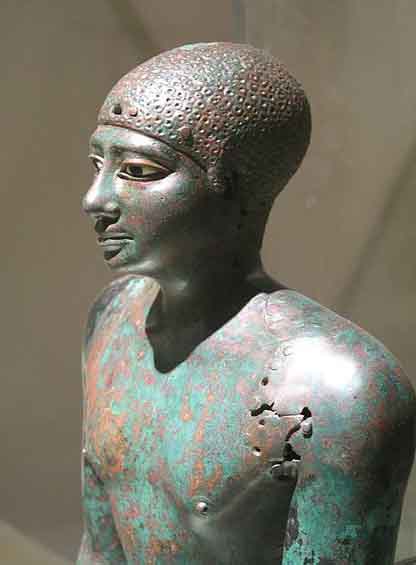
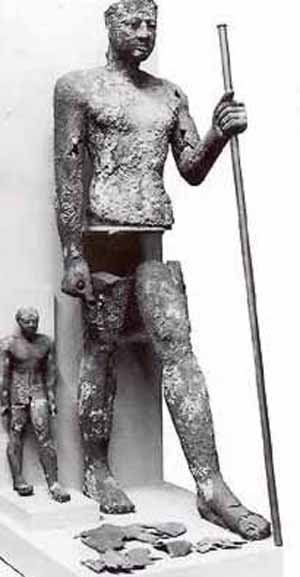
Copper statue of Pepi I and Merenre
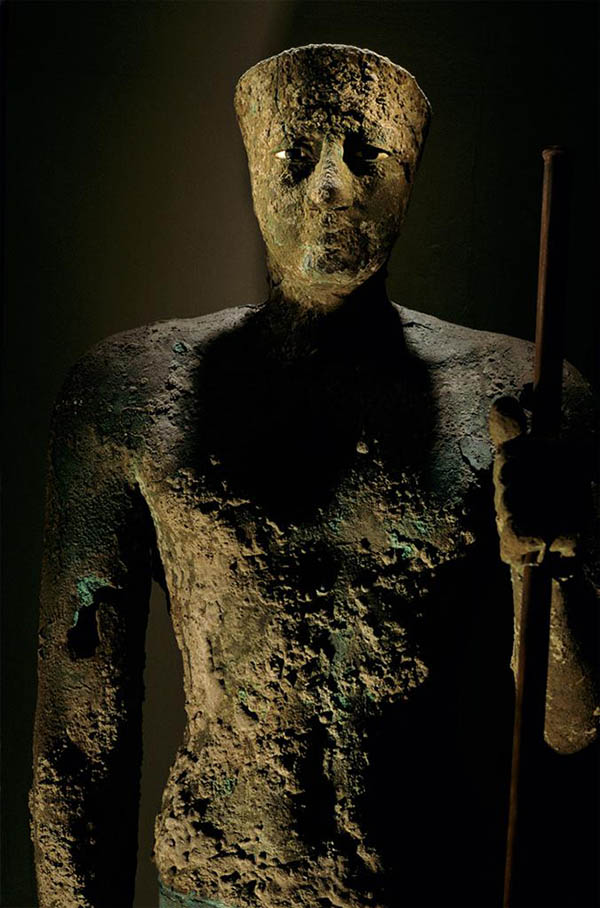
Two copper statues of Pepi I and his son Merenre were found at Hierakonpolis; they are thought to depict the two royals symbolically "trampling underfoot the Nine bows," a stylized representation of Egypt's conquered foreign subjects. These rare statues were found in one of the underground stores of the temple of Nekhen "together with a statue of king Khasekhemwy (Second Dynasty) and a terracota lion cub made during the Thinite era."
The statues had been disassembled and placed inside one another and sealed with a thin layer of engraved copper bearing the titles and names of Pepi I "on the first day of the Jubilee" or Heb Sed feast. While the identity of the larger adult figure as Pepi I is revealed by the inscription, the identity of the smaller and younger statue remains unresolved.
The most common hypothesis among Egyptologists is that the athletic young man in the smaller statue was Merenre "who was publicly associated as his father's successor on the occasion of the Jubilee. The placement of his copper effigy inside that of his father would therefore reflect the continuity of the royal succession and the passage of the royal sceptre from father to son before the death of the pharaoh could cause a dynastic split." More recently, however, it has been suggested that the smaller statue is in fact that "of a more youthful Pepy I, reinvigorated by the celebration of the Jubilee ceremonies."
Pepi I was a prolific builder who ordered extensive construction projects in Upper Egypt at Dendera, Abydos, Elephantine and Hierakonpolis. One of his most important court officials was Weni the Elder who had a great canal built at the First Cataract for the king. Weni was singly responsible for hearing an unusual charge against a Queen Weret-yamtes, a resident in Pepi's harem. Weni gives no further information on this event.
The reign of Pepi saw the rising influence and wealth of nobles outside the royal court, a condition that perhaps had much to do with a decline into the First Intermediate Period. These nobles built fine tombs for themselves and often boasted of privileges resulting from friendship with Pepi I.
Pepi I initiated a number of trading and other expeditions, often for fine stone to be used in his many building projects. One inscription found at the alabaster quarries at Hatnub is dated to year 50 of his reign. It refers to the 25th cattle count, which was a biennial event. He was also active at the Wadi Maghara turquoise and copper quarries in the Sinai, the greywacke and siltstone quarries of Wadi Hammamat, where his first Sed Festival is mentioned. We believe he also maintained diplomatic and commercial relations with Byblos and Ebla.
He may have also sent expeditions to the mines of Sinai and as far away as Palestine. The expedition into Palestine was led by a person named Weni the Welder and involved landing troops from the sea. A single inscription is the only document of the five campaigns led under Pepi I Palestine, the Land of the Sand Dwellers as the Egyptians called the regions east of Egypt.
Pepi I probably did considerable building but little of it remains, as such. Some of his building projects were probably incorporated into later projects, but he did leave behind many inscriptions. Building projects of Pepi I include the remains of a chapel (Hwt-ka) at Bubastis, as well as projects at Elephantine and Abydos. He may have carried out work at Dendara too.
The Pyramids of Pepi I and His Queens
He built his pyramid at South Saqqara and the Pyramid Text inscribed on the pyramid walls were the first to be found by Egyptologists, though not the first recorded in a pyramid. This pyramid was called Mn-nfr, meaning (Pepi is) established and good". The corruption of this name by classical writers provided our modern name for Egypt's ancient capital, Memphis. His palace may have been very near his pyramid in South Saqqara.
Pepi is further attested to by decrees found at Dahshure (now in Berlin) and Coptos. He was mentioned in biographies of Weni in his tomb at Abydos, Djaw from his tomb at Abydos, Ibi in his tomb at Deir el-Gabrawi, Meryankhptahmeryre in his tomb at Giza, Qar in hist tomb at Edfu and the biography on a tomb at Saqqara by an unknown person.
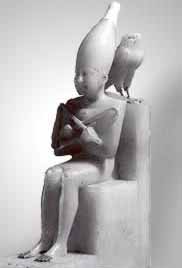
There are a number of interesting questions to be answered about this period. Unas, the last king of the 5th Dynasty began to distance himself from the sun cult so closely connected to the earlier dynasty rulers. However, he did not seem to completely withdraw from this cult. But by the time of Teti, the first ruler of the 6th Dynasty, ties seem to have been severed. He was murdered, we are told and then we find perhaps a new king usurping the throne of Egypt named Userkare. His name means the "Ka of Ra is powerful", reflecting back on the old sun cult.
When Pepi I does ascend the throne, perhaps only after a year of rule by Userkare, he has the name of Userkare removed wherever possible, as one might imagine he would under the circumstances. However, Pepe I himself is next the subject of a plot, who at least a few Egyptologists believe might have been initiated by the mother of Userkare. Most resources explain the murder of Teti, the ascension to the throne of Userkare and the plot against Pepi I as three different events, but could much of the trouble of this period have been the results of the pharaohs' abandonment of the sun cult? We also see Pepi I reaching out to the power structure of Abydos, perhaps as allies. This is all simply speculation, historical fiction if you will allow, but the point being is that there is much left to be learned about this period of Egypt's history.
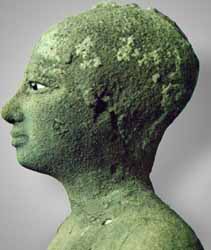
He was the fourth king of the 6th dynasty.
(2283 - 2278 BC) - "Beloved of Re"
This copper statue, found with a much larger copper statue of Pepi I, has long been assumed to be of Merenre and a boy or young man. However, it has been questioned lately whether it is instead a statue of Pepi II. These are believed to be the oldest, large copper statues ever found, but some are now questioning whether the statue of the boy is actually that of Merenre, or rather a young Pepi II.
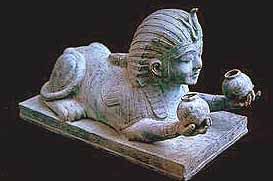
Merenre was a son of Pepi I and Ankhesenpepi I, and grandson of the female vizier Nebet and her spouse Khui.
While Merenre Nemtyemsaf was once believed to have served as a brief co-regent to his father Pepi I Meryre before ruling in his own right, the publication of the South Saqqara Stone annal document in 1995 by Vassil Dobrev and Michel Baud shows that Merenre directly succeeded his father in power with no interregnum or coregency. The badly damaged document preserves the record of Pepi I's final year - his 25th Count and proceeds immediately to the first year count of Merenre.
Merenre shared his father's fascination with Nubia and continued to explore deep into the region. He also began a process of royal consolidation, appointing Weni as the first governor of all of Upper Egypt and expanding the power of several other governors. While he was once assumed to have died at an early age, recent archaeological discoveries discount this theory.
Two contemporary objects suggests that Merenre's reign lasted slightly more than a decade. The South Saqqara Stone Annals preserves his Year after the 2nd Count whereas Merenre's Year after the 5th Count (Year 10 if biannual) is attested in a quarry inscription from Hatnub Inscription No.6, according to Anthony Spalinger.
The same South Saqqara Stone - which was created during Pepi II's reign - credits Merenre with a minimum reign of 11 to 13 Years, however, (based on a straight biannual count) which would raise Merenre's reign length from a traditional figure of 5 to 6 years. The British Egyptologists Ian Shaw and Paul Nicholson in a 1995 book raised Merenre I's reign from the traditional 6 year figure to 9 years.
However, they were unaware of the contents of the South Saqqara Stone which was published in the same year by Baud & Dobrev and shows that Merenre had a minimum reign of 11 years with no co-regency with his father, Pepi I. (It should be noted, of course, that cattle counts were not always biennial; for example, 18 had been performed by the 30th year of Pepi I's reign. It is therefore entirely possible that Merenre ruled for fewer than 11 years.)
Sixth dynasty royal seals and stone blocks found at Saqqara demonstrate that Merenre's aunt, Queen Ankhesenpepi II, was the wife of both Pepi I and then Merenre himself. Since the South Saqqara Stone shows Merenre's reign intervened between Pepi I and Pepi II and lasted for a minimum of slightly over a decade, this indirectly indicates that Merenre I was actually Pepi II's father, rather than Pepi I as was traditionally assumed. Merenre's daughter was Ankhesenpepi III, the future wife of Pepi II.
Merenre, sometimes referred to as Merenre I as there was a much later king by the same name, was the third ruler of Egypt's 6th Dynasty. As the oldest living son of Pepi I, he succeeded his father, we believe, at a fairly young age, and probably died unexpectedly young, perhaps between his fifth and ninth year of rule. He was succeeded by his younger half brother, Pepi II. The Oxford History of Ancient Egypt places the years he ruled as 2287-2278 BC while Chronicle of the Pharaohs gives him from 2283 until 2278.
Merenre was this king's throne name, which means "Beloved of Re". He is sometimes also referred to as Merenra. His birth name was Nemty-em-sa-f, which means, "Nemty is his Protection". His Horus name was Ankh-khau.
His mother was Ankhnesmerire I (Ankhesenpepi I), who, along with her younger sister by the same name, married Pepi I in the later part of his rule. Labrousse, who's team is excavating in South Saqqara where Merenre's pyramid is located, now believes that Ankhnesmerire II (Ankhesenpepi II), married Merenre. She was a late wife of Pepi I, Merenre's father, and by him, the mother of Pepi II, Merenre's half brother. She may have not been as old, or much older then Merenre, but sometimes working out relationships is interesting. Not only would she be Merenre's queen, but also his stepmother and aunt.
Pepi II would not only be his half brother and his cousin, but also his stepson. In addition, the Labrousse team excavating at Saqqara now believes that a Queen Ankhnesmerire III who's pyramid is located very near Pepi I's was a daughter of Merenre, and became the wife of Pepi II. Lets see. That would make her Pepi II's wife, niece and if Ankhnesmerire II was her mother, also his half sister. He had another daughter named Ipwet (Iput II) who's pyramid is also in the South Saqqqara pyramid field.
Merenre may have served as his father's coregent for a few years prior to Pepi I's death. Uni (Weni?), who had worked under Pepi I, continued to make expeditions, and the governor of Aswan, Harkhuf, also led expeditions into Africa. Around, his ninth regnal year, Merenre himself visited Aswan to receive a group of southern chieftains. It is interesting to note that this was a time when new people, who archaeologists refer to as the Nubian C Group, were migrating from the south into northern Nubia. Because of the growing relationship with Nubia during this period, merenre also attempted to improve travel in the first cataract region which was navigated by way of the Dunqul Oasis and canals.
The Nubian rulers are said to have helped by supplying the wood needed to construct the barges. (Since there was no wood in Lower Nubia, they would have had to procure it from sources much farther south). At the same time the Lower Nubian rulers seem also to have profited greatly by sending their fighting men to Egypt for hire. By the end of the Old Kingdom (ca. 2150 BC), the Egyptian armies were mainly composed of Nubian mercenaries, many of whom would ultimately settle in Egypt, marry Egyptian women, and become assimilated into the Egyptian population.
During the Old Kingdom, Egyptian texts speak of a land in Upper Nubia called "Yam." Besides troops from "Wawat, Irtjet, and Setju" (Lower Nubia), troops from Yam, too, were hired for service in the Egyptian army. The only source that provides any real information about Yam is a biography of the Aswan governor, Harkhuf, preserved in his tomb at Aswan. Harkhuf tells us that, on behalf of the pharaohs Merenre and Pepi II, he led four expeditions to Yam, each of which took eight months.
The Nubian rulers are said to have helped by supplying the wood needed to construct the barges. (Since there was no wood in Lower Nubia, they would have had to procure it from sources much farther south). At the same time the Lower Nubian rulers seem also to have profited greatly by sending their fighting men to Egypt for hire. By the end of the Old Kingdom (ca. 2150 BC), the Egyptian armies were mainly composed of Nubian mercenaries, many of whom would ultimately settle in Egypt, marry Egyptian women, and become assimilated into the Egyptian population.
During the Old Kingdom, Egyptian texts speak of a land in Upper Nubia called "Yam." Besides troops from "Wawat, Irtjet, and Setju" (Lower Nubia), troops from Yam, too, were hired for service in the Egyptian army. The only source that provides any real information about Yam is a biography of the Aswan governor, Harkhuf, preserved in his tomb at Aswan. Harkhuf tells us that, on behalf of the pharaohs Merenre and Pepi II, he led four expeditions to Yam, each of which took eight months.
Merenre, like his predecessors, maintained diplomatic and commercial relations with Byblos, and we know from inscriptions and tomb biographies that he had alabaster quarried from Hatnub and greywacke and siltstone from Wadi Hammamat. A copper statue of Merenre as a young boy was found with a much larger copper statue of his father, Pepi I. These are believed to be the oldest, large copper statues ever found, but some are now questioning whether the statue of the boy is actually that of Merenre, or rather a young Pepi II. There is also a very small sphinx of Merenre in the National Museum of Scotland, Edinburgh.
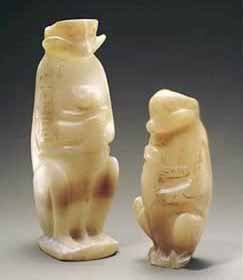
Merenre is further attested to by a Box (Hippopotamus ivory) in Paris, Louvre Museum, a rock inscriptions near Aswan, the inscriptions on an ivory mother monkey that was probably a gift to an official, decrees of the king found at the pyramid temple of Menkawre and in biographies of Uni (Weni) in his tomb at Abydos, Djaw from his tomb also at Abydos, The tomb of Harkhuf at Elephantine, The tomb of Ibi at Deir el-Gabrawi, the Tomb of Qar at Edfu, and an unknown persons tomb at Saqqara.
He is also mentioned in an inscription in the tomb of Maru at Giza (though this inscription is now in Brussels). Recently another inscription has also been found by a Polish team that mentions Merenre on a rock wall at Deir el-Bahari on the West Bank at Luxor (ancient Thebes).
Merenre was probably buried in his pyramid at South Saqqara, though apparently because of his unexpected death, this pyramid was not yet completed. Until fairly recently, it was believed that the first ever mummy was that of Merenre I, though in reality the mummy found in his pyramid may not have been that of Merenre. Nevertheless, in 1997, excavations began at Hierakonopolis revealing a large predyanstic cemetery full of older mummies. However, if the mummy is indeed that of Merenre, it would remain the oldest know royal mummy.
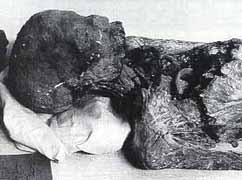
The mummy discovered by Gaston Maspero in 1881, while working at the pyramid of Merenre I at Saqqara South, presents us with somewhat of a problem with regard to its identification.
Based on the place where it was discovered, in the black granite sarcophagus inside the pyramid, it has been identified as belonging to Merenre I. If this identification is correct, this mummy would be the oldest complete royal mummy known to us today.
An important part of the problem is the fact that the current whereabouts of the mummy are unknown, making it impossible to examine it with more modern tools and equipment than was available in the late 19th and the early 20th century.
According to the Turin King-list, he ruled for over 90 years, which appears to be confirmed by Manetho, who recorded 94 years. This would make Pepi II the longest ruling king of Ancient Egypt. Some doubt has however been shed on this high number, and some researchers believe that it was the result of a miss-reading of 64.
However, because of the onset of the First Intermediate Period, the latter part of his reign was probably ineffectual, perhaps at least somewhat due to his advanced age. While the power of the nomarchs grew, the power of pharaoh dissolved. With no central power, local nobles began raiding each other's territories.
His mother Ankhnesmerire II most likely ruled as regent in the early years of his reign.
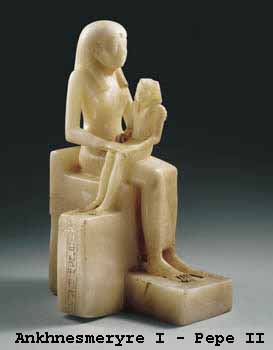
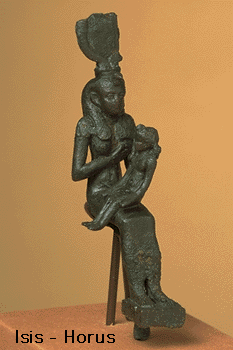
An alabaster statuette in the Brooklyn Museum depicts a young Pepi II, in full kingly regalia, sitting on the lap of his mother. Despite his long reign, this piece is one of only three 3D representations (i.e. statuary) in existence of this particular king. She may have been helped in turn by her brother Djau, who was a vizier under the previous king.
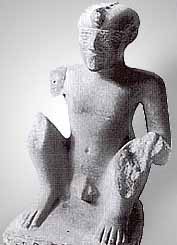
A glimpse of the personality of the early child king can be found in a letter he wrote to Harkhuf, a governor of Aswan and the head of one of the expeditions he sent into Nubia. Sent to trade and collect ivory, ebony and other precious items, he captured a pygmy. News of this reached the royal court, and an excited young king sent word back to Harkhuf that he would be greatly rewarded if the pygmy were brought back alive, likely to serve as an entertainer for the court. This letter was preserved as a lengthy inscription on Harkhuf's tomb, and has been called the first travelogue.
Wives
Over his long life Pepi II had several wives, thought to include Neith (A), Iput II, Ankhenespepy III, Ankhenespepy IV, and Udjebten. Following a long tradition of royal incestuous marriage, Nieth was Pepi II's half-sister (daughter of Ankhnesmerire I) and Iput was his niece (a daughter of his brother Merenre). Of these queens, Neith, Iput, and Udjebten each had their own minor pyramids and mortuary templates as part of the king's own pyramid complex in Saqqara.
Foreign Relations
It is thought that Pepi II carried on in the tradition of his predecessors and continued with existing foreign relations, and possibly expanding further trade links into southern Africa. Copper and turquoise mining were undertaken at Wadi Maghara, and alabaster was quarried from Hatnub, both in the Sinai. There is at least one trade expedition to Punt recorded. Diplomatic records also exist of missions to Byblos in ancient Palestine.
Pepi II is thought to have taken a policy of pacification in Nubia, with Harkhuf making at least two further expeditions into the area. Over time it appears as though relations grew strained, for while Harkhuf managed to return safely from each of his expeditions, one of his successors was not so lucky.
There were also military forays into adjacent lands, but it is noted that there was an increasing reliance upon Libyan and Nubian mercenaries. Further possible evidence of a relative lack of success in these ventures comes from the fact that a scene from the king's pyramid, depicting him as a Sphinx trampling his enemies - including a Libyan chieftain and his family - is wholly derivative from the mortuary complex of previous pharaoh Sahure, which calls into question the veracity of the events supposedly being depicted.It is also known that near the end of his reign, some foreign relations were completely broken off, a further sign of the disintegration of central rule.
The Decline of the Old Kingdom
The decline of the Old Kingdom arguably began before the time of Pepi II, with nomarchs (regional representatives of the king) becoming more and more powerful and exerting greater influence. Pepi I for example, married two sisters who were the daughters of a nomarch. That king later made their brother a vizier. Their influence was extensive, both sisters bearing sons who were chosen as part of the royal succession: Merenre and Pepi II.
Increasing wealth and power appears to have been handed over to high officials during Pepi II's reign. Large and expensive tombs appear at many of the major nomes of Egypt, building by the reigning nomarchs, the priestly class and other administrators. Nomarchs were traditionally free from taxation and their positions became hereditary. Their increasing wealth and independence led to a corresponding shift in power away from the central royal court to the regional nomarchs.
Later in his reign it is known that Pepi divided the role of vizier into two: one for Upper Egypt and one for Lower, a further decentralization of power away from the royal capital of Memphis. Further, the seat of vizier of Upper Egypt was moved several times. The southern vizier was stationed at Thebes.
It is also thought that Pepi II's extraordinarily long reign may have been a contributing factor to the general breakdown of centralized royal rule. While there are some doubts that he reigned as long as 94 years (some scholars such as Von Beckerath believe this to be a misreading of long-lost original texts by early historians such as Manetho, and ascribe him a seemingly more realistic figure of 64 years, which seems more feasible if he was succeeded by his son as Egyptian tradition states, rather than a grandson), most believe that his reign was unusually long.
This almost certainly produced a succession crisis and also led to a stagnation of the central administration. A better documented example of this type of problem can be found in the long reign of much later Nineteenth Dynasty pharaoh Ramesses II and his successors. It should be stressed that Pepi II's highest date is the "Year after the 31st Count, 1st Month of Shemu, day 20" from Hatnub graffito No.7, according to Spalinger.
This date would be equivalent to only Pepi II's Year 62 (on the biennial dating system) and conforms well with the suggestion of a 64 Year reign for him given the noticeable absence of known dates for Pepi II from his 33rd to 47th Count. (a previous suggestion that the Year of the 33rd Count occurs for Pepi II in a royal decree for the mortuary cult of Queen Udjebten was withdrawn by Hans Goedicke in 1988 in favour of a more probable reading of the Year of the 24th Count instead.)
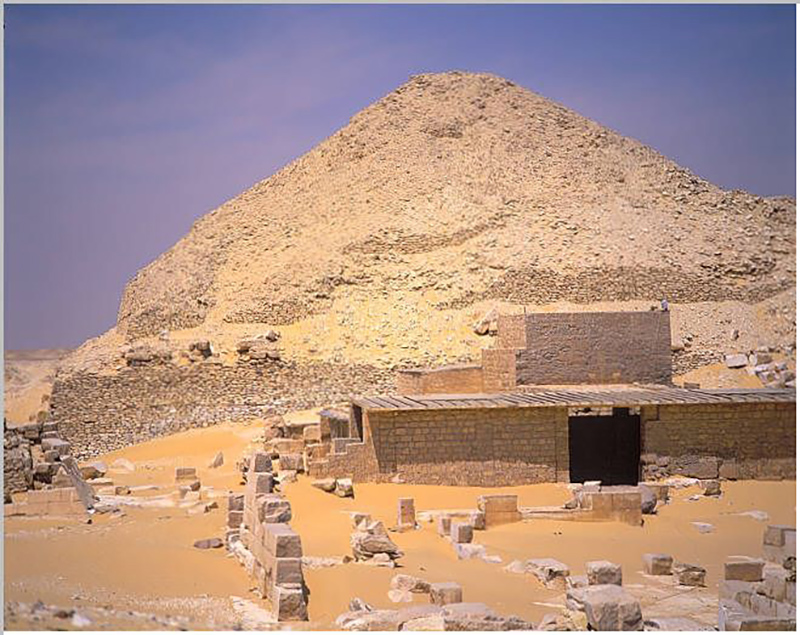
Pyramids of Pepi II and His Queens
Pepi II's pyramid complex (originally known as Pepi's Life is Enduring) is located in Southern Saqqara, close to many other Old Kingdom pharaohs. His pyramid is a modest affair compared to the great pyramid builders of the Fourth Dynasty, but was comparable to earlier pharaohs from his own dynasty. It was originally 78.5 metres high, but erosion and relatively poor construction has reduced it 52 metres.
The pyramid was the center of a sizable funerary complex, complete with a separate mortuary complex, a small, eastern satellite pyramid. This was flanked by two of his wives' pyramids to the north and north-west (Neith (A) and Iput II respectively), and one to the south-east (Udjebten), each with their own mortuary complexes. Perhaps reflecting the decline at the end of his rule, the fourth wife, Ankhenespepy IV was not given her own pyramid but was instead buried in a store room of the Iput's mortuary chapel. Similarly, Prince Ptahshepses, who likely died near the end of Pepy II's reign, was buried in the funerary complex of a previous pharaoh, Unas, within a "recycled" sarcophagus dating to the Fourth Dynasty.
The ceiling of the burial chamber is decorated with stars, and the walls are lined with passages from the Pyramid texts. An empty black sarcophagus bearing the names and titles of Pepi II was discovered inside.
Following in the tradition of the final pharaoh of the Fifth Dynasty, Unas and of his more immediate predecessors Teti, Pepi I and Merenre, the interior of Pepi II's pyramid is decorated with what has become known as the pyramid texts, magical spells designed to protect the dead. Well over 800 individual texts (known as "utterances") are known to exist, and Pepi II's contains 675 such utterances, the most in any one place.
It is thought that this pyramid complex was completed no later than the thirtieth year of Pepi II's reign. No notable funerary constructions of note happened again for at least 30, and possibly as long as 60 years, due indirectly to the king's incredibly long reign. This meant there was a significant generational break for the trained stonecutters, masons, and engineers who had no major state project to work on and to pass along their practical skills. This may help explain why no major pyramid projects were undertaken by the subsequent regional kings of Herakleopolis during the First Intermediate Period.
The complex was first investigated by John Shae Perring, but it was Gaston Maspero who entered it first in 1881. Gustav Jequier investigated in detail between 1926 and 1932.
Successors
There are no official contemporary records or inscriptions of Pepi's immediate successors, and for this reason in many books Pepi II is typically credited as being the last verifiable pharaoh of the Sixth Dynasty and of the Old Kingdom.
However, according the Manetho and the Turin King List, he was succeeded by his son Merenre II, who reigned for just over a year. He in turn may have been succeeded by Nitocris, who was likely Merenre II's sister as well as wife. If she did in fact rule, she would be the first female ruler of Egypt. According to the story as told by Manetho, Merenre II was assassinated, and Nitocris saw to it that his murderers were punished prior to committing suicide. There is now considerable doubt in the academic community as to whether she in fact existed, given the paucity of physical evidence in such things as the various Kings Lists attesting to her rule.
This was the end of the Old Kingdom of Egypt, a prelude to the roughly 200-year span of Egyptian history known as the First Intermediate Period.
Merenre Nemtyemsaf II was briefly Pharaoh of Egypt, likely succeeding his long-lived father Pepi II Neferkare. The Turin King List says that Merenre reigned for only a year, after succeeding his father Pepi II. His name is also mentioned on a stela that was discovered near the site of the pyramid of Neith, perhaps his mother. His nomen was formerly read as Antyemsaf, a reading now known to be incorrect.
It was long thought that he was succeeded by Nitocris, who was thought to be his sister/wife. It is now generally recognized that the name "Nitocris" was conflated with that of a male pharaoh named Neitiqerty Siptah instead.According to Herodotus (Histories ii), he was murdered in a plot and later revenged by his sister Nitocris.
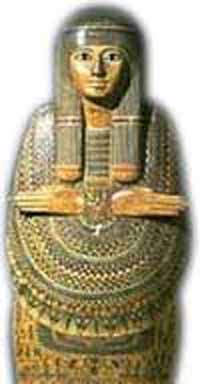
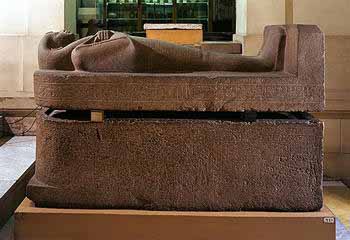
The Ancient Egyptian king, Neitiqerty Siptah is an obscure successor to Merenre Nemtyemsaf II, towards the end of the Sixth dynasty of Egypt.
His reign is usually replaced with that of Nitocris, the 'first female pharaoh', who seems not to have actually existed, as although it was claimed that Nitocris appears on a fragment of the Turin King List, dated to the Nineteenth Dynasty, under the Egyptian name of Nitiqreti.
The fragment where this name appears was thought to belong to the Sixth Dynasty portion of the king list, thus appearing to confirm both Herodotus and Manetho. However, microscopic analysis of the Turin King List suggests the fragment was misplaced in reassembling the fragmentary text, and that the name Nitiqreti is in fact a faulty transcription of the praenomen of a clearly male king Netjerkare Siptah, who is named on the Abydos King List as the successor of the Sixth Dynasty king Nemtyemsaf II. On the Abydos King List, Netjerkare Siptah is placed in the equivalent spot that Neitiqreti Siptah holds on the Turin King List.
�Nitocris has been claimed to have been the last pharaoh of the Sixth Dynasty. Her name is found in the Histories of Herodotus and writings of Manetho but her historicity is questionable.
According to Herodotus (Histories ii), she invited the murderers of her brother, the "king of Egypt", to a banquet, then killed them by flooding the sealed room with the Nile. Then, to avoid the other conspirators, she committed suicide (possibly by running into a burning room).
Manetho claims she built the "third pyramid" at Giza, which is attributed by modern historians and archaeologists to Menkaure. Herodotus also has a Babylonian queen of the same name and talks of her constructions in Babylon, mainly connected with diverting the Euphrates. His story about her tomb and the inscription on it which fooled Darius into opening it, only to have another inscription on the inside that chastised the opener for being so greedy is an early example of a familiar cultural meme.
Nitocris is not mentioned, however, in any native Egyptian inscriptions and "she" probably did not exist. It was long claimed that Nitocris appears on a fragment of the Turin King List, dated to the Nineteenth Dynasty, under the Egyptian name of Nitiqreti. The fragment where this name appears was thought to belong to the Sixth Dynasty portion of the king list, thus appearing to confirm both Herodotus and Manetho.
However, microscopic analysis of the Turin King List suggests the fragment was misplaced in reassembling the fragmentary text, and that the name Nitiqreti"is in fact a faulty transcription of the praenomen of a clearly male king Netjerkare Siptah I, who is named on the Abydos King List as the successor of the Sixth Dynasty king Nemtyemsaf II. On the Abydos King List, Netjerkare Siptah is placed in the equivalent spot that Neitiqreti Siptah holds on the Turin King List.